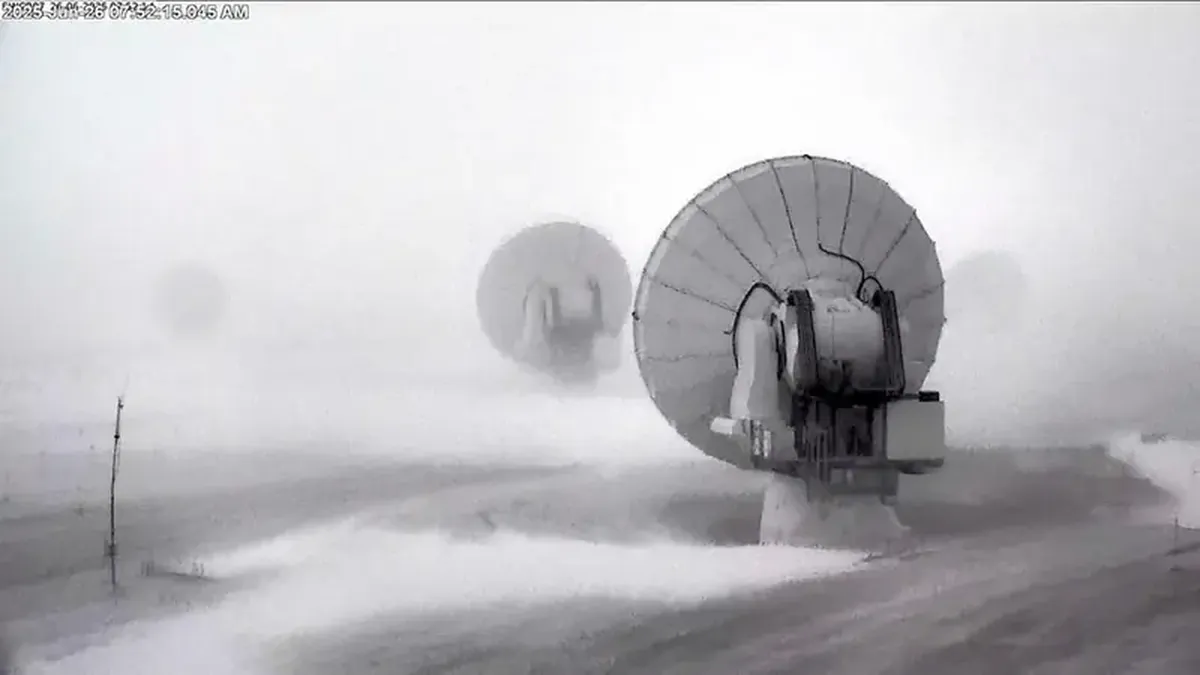
The world’s most powerful network of radio telescopes, ALMA (Atacama Large Millimeter Array), located at an altitude of 5,104 meters in the Atacama Desert of Chile, has temporarily halted operations due to a rare snowfall.
This could indicate that, in the future, this unique observatory may increasingly face extreme weather events as a result of the climate crisis.
What Did the Radio Observatory Team Report?
According to ALMA staff speaking to Live Science, scientific research at the observatory has been temporarily suspended.
“There hasn’t been any snowfall recorded at the base camp for over 10 years,” the team shared. In the Atacama Desert, typically, only 1 to 15 millimeters of precipitation falls each year.
The current snowfall was caused by extraordinary atmospheric instability affecting northern Chile. The country’s meteorological agency issued warnings for snow and wind gusts of 80-100 km/h due to the passage of a “cold core” through the region, noted meteorologist Elio Brufort.
In addition to the snowfall, temperatures in the desert dropped to minus 12 degrees Celsius. This made operations at the high-altitude camp, situated at 2,900 meters, extremely challenging.
The observatory activated its “survival mode” safety protocol. Under this protocol, all major ALMA antennas were reoriented to face the wind, minimizing potential damage from snow accumulation or strong gusts.
According to ALMA astronomers, as soon as the storm subsides, snow removal teams will immediately mobilize to inspect each antenna. “This needs to happen very quickly, as the best conditions for observations arise right after a snowfall: the cold helps reduce air humidity, which is the biggest obstacle to our measurements,” they noted.

Could Such Events Become More Frequent?
ALMA, the most powerful network of radio telescopes on the planet, consists of 66 high-precision antennas scattered across the high-altitude Chajnantor plateau. An international team of scientists works at the observatory, one of whose key tasks is to respond to extreme weather events like this one.
The fact that snow has halted the observatory raises questions about the network’s effectiveness in the face of global warming.
Could such events become more frequent? Raúl Cordero, a climatologist at the University of Santiago, responded to this question: “While it’s still too early to directly link snowfall at low elevations in the desert to global warming, climate models predict a potential increase in precipitation even in this hyper-arid region. But for now, we cannot confidently say whether this increase is occurring.”
